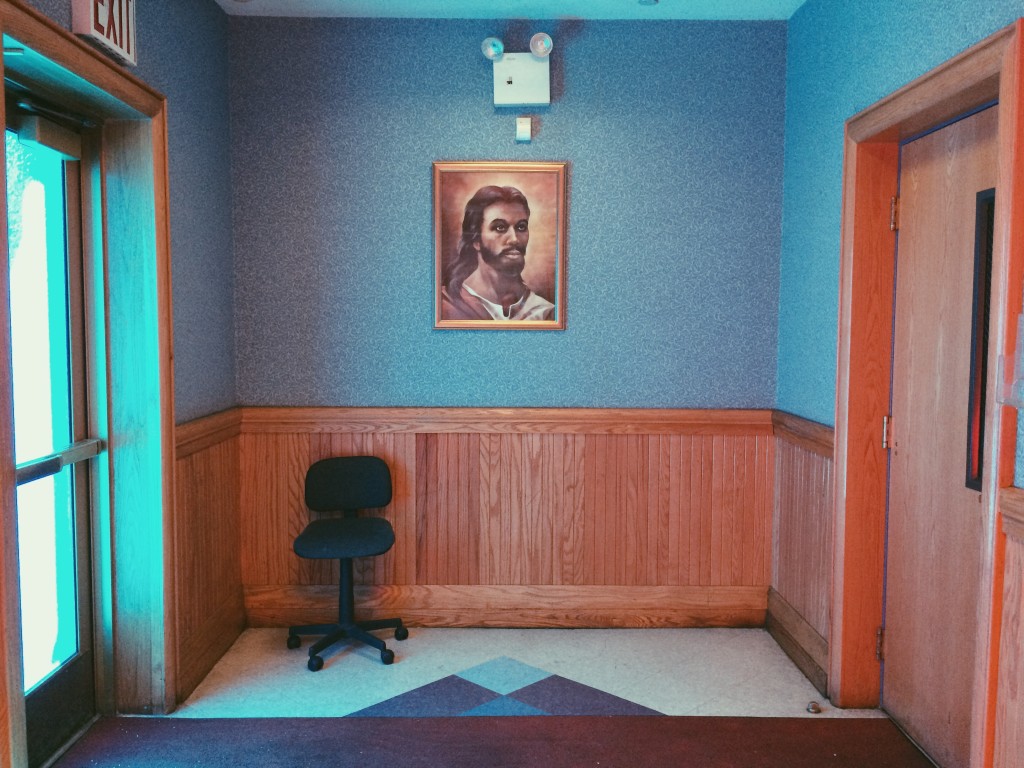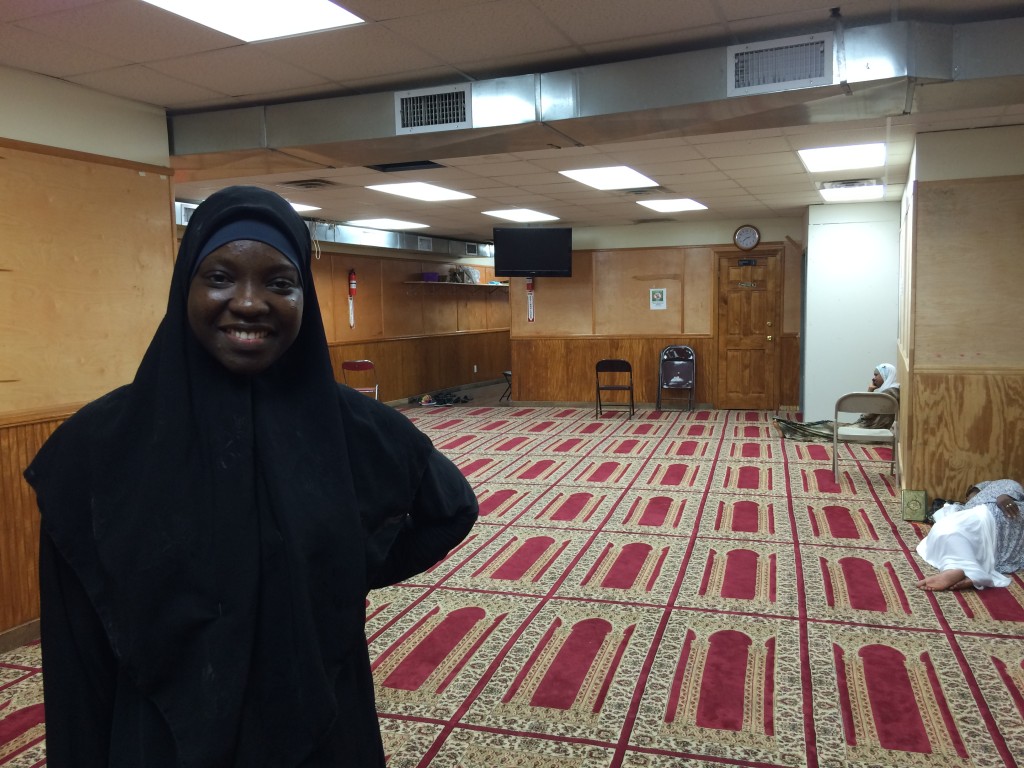 The interior of a Baptist church on Fulton Avenue.
The interior of a Baptist church on Fulton Avenue.
I moved to Bed-Stuy, Brooklyn three weeks ago, knowing very little about the religious landscape of my neighborhood. On my first night, I realized that there is a synagogue on my block in which the congregation is composed entirely of Ethiopian Jews. Three blocks away is an unusual Egyptian temple, where a small sect of black Muslims who call themselves the Nuwaubian Nation (a group that developed concurrent with the Nation of Islam) continue to worship. My second night, I heard the call to prayer sounding while I was at dinner a few blocks away. Religion is part of the culture and it’s what holds the neighborhood together.
With that in mind, I was interested in exploring how the different religious communities in Bed-Stuy meet, worship, interact, sing, and pray. I decided to call these liminal spaces religious ecotones. In ecology, an ecotone is a transition zone between two biomes. In other words, it is the space in which two communities meet and integrate.
In our audio recording, Katie and I sought to capture what worship sounds like across religions in Bed-Stuy. Each congregation has its own form of “mass” – a meeting in which the members pray and listen to their religious leaders speak. We captured some sounds from a Catholic church, a mosque, a Baptist church, and a Jewish friend during their different periods of worship.
The outcome was a patched-together narrative of what worship sounds like. Here’s the outcome:
Interestingly, I found that this project proved to be a good complement to this week’s reading, the short sci-fi piece “The Machine Stops” by E.M. Forster. The story explores a post-apocalyptic world in which humans are dependent on technology for all their needs, including social interaction. People in this world have a huge network of friends, many of whom they haven’t met. The story effectively predicts the rise of online culture and social media, as our generation increasingly flees traditional centers of community (such as religious spaces) and creates new, different communities online.
 Fatima in the women’s section of a mosque on Fulton Avenue.
Fatima in the women’s section of a mosque on Fulton Avenue.
Churches, mosques, synagogues, and meditation classes are spaces in which individuals have in-person social interactions. They are also gathering places for religious communities in which intergenerational conversations can take place. I think our society needs both types of meeting spaces – those that occur online and those that are located within our communities.